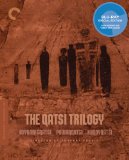| Reviews & Columns |
|
Reviews DVD TV on DVD Blu-ray 4K UHD International DVDs In Theaters Reviews by Studio Video Games Features Collector Series DVDs Easter Egg Database Interviews DVD Talk Radio Feature Articles Columns Anime Talk DVD Savant Horror DVDs The M.O.D. Squad Art House HD Talk Silent DVD
|
DVD Talk Forum |
|
|
| Resources |
|
DVD Price Search Customer Service #'s RCE Info Links |
|
Columns
|
|
|
Qatsi Trilogy (Koyaanisqatsi / Powaqqatsi / Naqoyqatsi) - Criterion Collection, The
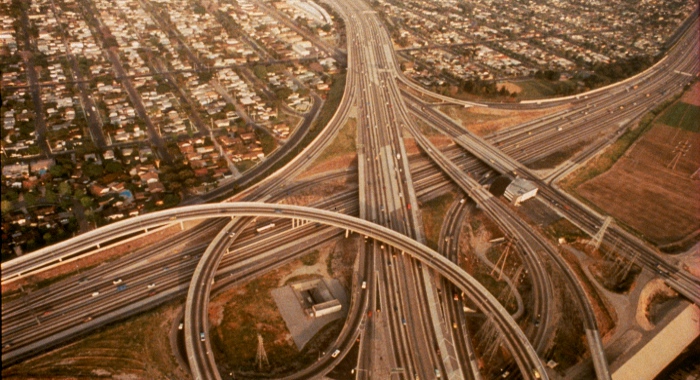 Rarely imitated and never duplicated, The Qatsi Trilogy (1982-2002) offers an indispensable look at the world around us. My first exposure to the films was a decade ago, when Naqoyqatsi debuted theatrically and MGM released Koyaanisqatsi (1982) and Powaqqatsi (1988) on DVD. Criterion's new Blu-Ray boxed set represents a natural and necessary progression of the films' sensory impact, pairing a top-notch A/V presentation with a host of informative supplements. Though a direct summary of each film seems almost trivial in most respects, those new to the trilogy may be interested in what makes each one tick. Koyaanisqatsi ("Life Out of Balance") represents the combined efforts of cinematographer Ron Fricke, composer Phillip Glass and director Godfrey Reggio; it's a compelling marriage of visuals and music that leaves a lasting impression on first-time viewers. While the other two chapters of The Qatsi Trilogy share its non-narrative style, most will agree that the original gets just about everything right. This relentless collage of footage gives us a glimpse of events around the globe: building demolition, bustling urban landscapes, bomb detonation, assembly line production, television, pictograms, and much more. It's as much about humankind's relationship with technology as the environment and, of course, each other. Powaqqatsi ("Life in Transformation") literally slows down our trip around the world, focusing more on the global effect of industrialization in third-world countries. It frequently makes more obvious allusions to spiritual imagery and, during some of the film's most memorable scenes, focuses our attention on the next generation of humanity and how they might adapt to the rapidly changing landscape (or not). Unlike its predecessor, Powaqqatsi includes footage primarily shot by Leonidas Zourdoumis and Graham Berry, as Ron Fricke had transitioned to directing like-minded films such as Chronos (1985) and Baraka (1992). Naqoyqatsi ("Life as War") arrived 14 years later, and this final chapter of the trilogy is undoubtedly the most forceful and provocative. It's essentially about the gradual decline in human language and rise of impersonal communication, virtual reality and "civilized violence". In retrospect, Naqoyqatsi now seems a little ahead of its time in some areas but other segments haven't aged as well. Blame the ever-changing landscape; enough time has passed since Koyaanisqatsi and Powaqqatsi that their glimpses of outdated technology seem quaintly charming, whereas some of this digitally modified stock footage feels more like student work. Perhaps this third and final chapter, which undoubtedly focuses more on technology and its sinister, rapid evolution, was slowly doomed by the very same reason for its existence. It's still a fine cinematic experience in its own right, but Naqoyqatsi is the least essential of the three. Or the most.

Although some of the source material varies in quality (mostly during Naqoyqatsi, which often features digitally altered stock footage), The Qatsi Trilogy looks excellent and has obviously been treated with care. Presented in their original 1.85: and 1.78:1 aspect ratios, these director-approved 1080p transfers are vivid, crisp and free from digital imperfections like compression artifacts, DNR and edge enhancement. It's odd that Koyaanisqatsi didn't also include the superior open-matte 1.33:1 presentation found on the rare Director's Premium Edition DVD; but as it stands, I doubt many will find any issues with the theatrical framing present on these Blu-Rays. On the whole, The Qatsi Trilogy has never looked better, and there's no argument that these visually-minded films deserved the careful attention that they've received here.
HEADS UP: This images in this review are strictly decorative and do not represent Blu-Ray's fancy-pants 1080p resolution. Not to be outdone, the DTS-HD 5.1 Master Audio tracks included on each disc reproduce a dynamic and enveloping atmosphere that's easy to get sucked into. These are completely music-driven films with very little in the way of monologue or even lyrics, and the appropriate scores by Philip Glass (and cellist Yo-Yo Ma during Naqoyqatsi) come through with force and precision. Rear channels are used to great effect at times, but this is primarily a wide, front-loaded mix that can easily fill a large room with sonic detail, crisp channel separation and occasional surround effects. Obviously, no optional subtitles are included during these largely instrumental films...but unfortunately, they're not included during the bonus features either. This is probably my only complaint with Criterion's formula, but it's all the more noticeable in this case.
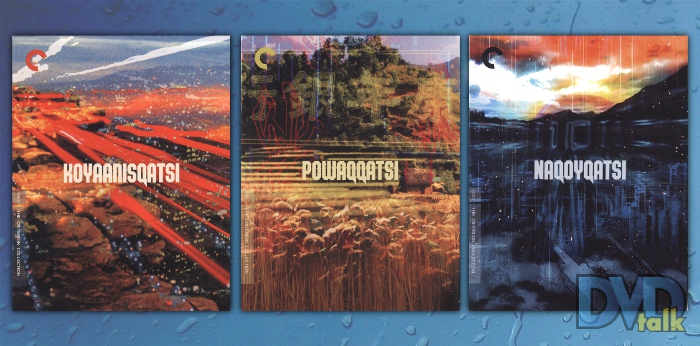
Powaqqatsi continues with "Impact of Progress" (SD, 20:24), a like-minded sequel to "Essence of Life" from the first disc. "Inspiration and Ideas (HD, 19:06) is a new interview with Reggio and details several of his cinematic and artistic influences. "The Qatsi Trilogy" (SD, 19:30) is an episode of a New Mexican public access show from 1989; recorded soon after Powaqqatsi's release, Reggio shares his thoughts and ideas about the as-yet-unfinished trilogy. Finally, the loosely-related "Anima Mundi" (HD, 29:48) is a 1992 Reggio/Glass short film about a animal groups and species, presented in a similar narrative-free style.
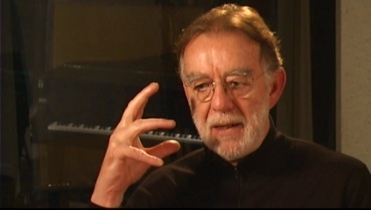 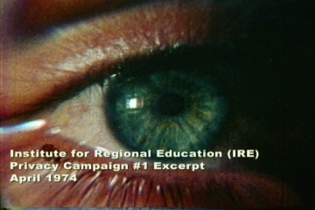 Naqoyqatsi begins with an Afterword with Reggio (HD, 17:02), who summarizes a handful of thoughts and observations about the trilogy as a whole. A 2003 Music Interview featuring Glass and cellist Yo-Yo Ma (SD, 8:12) sheds more light on their contributions to the third film, while a brief Behind-the-Scenes Featurette (SD, 5:21) features Reggio, Glass, producer Joe Beirne and editor/visual designer Jon Kane. Last on the menu is a lengthy 2003 Panel Discussion (SD, 55:36) with Reggio, Glass and Kane; conducted by New York Times music critic John Rockwell, this in-depth discussion was recorded live at New York University after a screening of the third film. It's a fine ending to a great collection of supplements. Each disc also includes the respective Theatrical Trailer for all three films, though only the first two are presented in HD. As mentioned above, no optional subtitles are included for any of these bonus features.
The Qatsi Trilogy offers a unique global perspective, pairing memorable footage with outstanding musical contributions by Philip Glass (and Yo-Yo Ma, during Naqoyqatsi). They're definitely an acquired taste but worth watching at least once, whether you're seeking spiritual enlightenment or just a time capsule trip. Criterion's Blu-Ray collection will undoubtedly tempt fans of all three films, offering director-approved transfers, lossless soundtracks and a solid collection of supplements. New viewers will undoubtedly want to rent before buying (or at least pick up the old DVD editions for pennies on the dollar), but there's more than enough meat here to consider The Qatsi Trilogy a worthy investment. Highly Recommended.
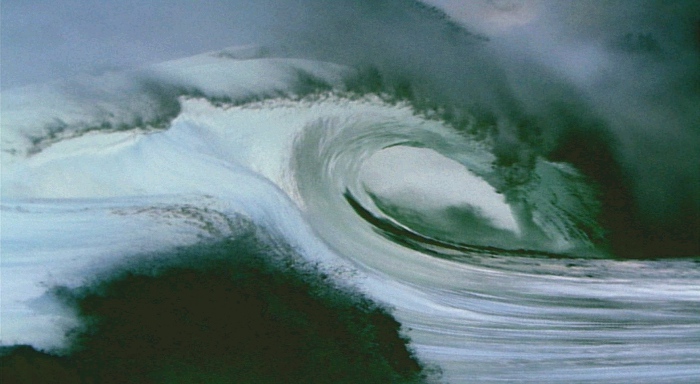
|
|
| Popular Reviews |
| Sponsored Links |
|
|
| Sponsored Links |
|
|
| Release List | Reviews | Shop | Newsletter | Forum | DVD Giveaways | Blu-Ray | Advertise |
|
Copyright 2024 DVDTalk.com All Rights Reserved. Legal Info, Privacy Policy, Terms of Use,
Manage Preferences,
Your Privacy Choices | |||||||









